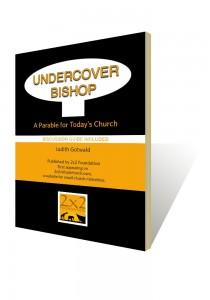Little Change in the Sea of Changes
 Alban Institute dissolved last year. Its impressive stable of experts on church survival could not save it.
Alban Institute dissolved last year. Its impressive stable of experts on church survival could not save it.
Today, the Alban Institute is a purveyor of books. Their web site is no longer a forum. It is a marketplace for authors.
Today’s offering is a new book on a tired subject: Transitional Ministry Today, by Norman Bendroth.
Anything new here? I don’t know. This post is announcing its upcoming release, so there is nothing to review just yet.
The promotional post leads me to believe it may be more of same.
I can’t get past the opening of the blog post promoting the book release.
In preparation for my book Transitional Ministry Today: Successful Strategies for Churches and Pastors, I spoke to dozens of practicing interim ministers, judicatory officials and observers of American church life. Those conversations and my research became a collection of essays reflecting upon new models and practices in face of the sea changes churches are facing.
Missing from his list of church experts is any hint that he spent time with the laity. Perhaps he did, but they did not earn mention.
The list of observations supports that the book is another review of what church leaders are to do with the helpless fish in the raging sea.
Any book that does not seriously consider the lay point of view is not likely to break new ground in transitional ministry.
Lay people are not helpless minnows, waiting to be used as bait for more attractive fish.
We’ve been dealing with transition just as long as pastors. We know that it is rough going in today’s world. We talk to people in the community, including people from other congregations. We can feel the offering plate getting lighter even when there are people in the pew. We do not need to have this explained to us—often as if it is somehow our fault.
We laity are on the front lines, holding many a congregation together in the absence of much professional help. The laity have tackled new technologies and new management styles in the secular world, while ministry experts have been slow to adopt even the basics of modern communication. Visiting the Middle Ages on Sundays is getting harder for laity.
Interim pastors, which are often forced on congregations, are often not dealing with the entire congregation but only with those willing to sit through endless discernment exercises.
One problem in the Church is that laity have little or no voice. Our views are often filtered through clergy—whether it be the local pastor or an editor moderating an online forum.
While this writer claims to have discussed strategies with dozens of experts, I wonder how many congregations he visited. How many heart to hearts did he have with lay leaders?
I and other members of our church experienced firsthand how the interim process is sometimes conducted with the interests of the judicatory in mind.
We visited 80 of our neighboring congregations. EIGHTY! Random visits—no plan. Close to a third of them had interim, bridge or mission pastors! There is a lot of discernment going on!
During our visits, we talked with members, sometimes leaders. We observed practices. We recorded our impressions—not as criticism but to help improve our own approach to ministry. We saw skilled and dedicated lay leaders working with little credit and no earthly reward. They are often leaders in their secular lives. Their insights are rarely considered in the tomes of material published on transitional ministry.
I don’t discourage anyone from reading more books about transition, including this one.
I do encourage others, including authors on church transition, to consider the lay point of view.
How do lay leaders get the ear of those in authority?
 I wrote a book about our experiences: Undercover Bishop: A Parable for Today’s Church.
I wrote a book about our experiences: Undercover Bishop: A Parable for Today’s Church.
PLOT SUMMARY: A newly elected bishop decides to visit congregations undercover to learn what the pastors in her charge don’t tell her. She chooses an urban neighborhood church, a small town church and a rural church.
The churches are composites of the churches we visited. Much of the dialogue comes directly from our conversations with members we encountered. A discussion guide is included.
Undercover Bishop is free in PDF form online and available in booklet form on Amazon.com.
You really nailed the lay experience!
—Reader from the Northwest
Coming Soon!
Welcome Is A Verb
2×2 is about to release a training that also grew from our church visits.
Every church has a welcome sign somewhere: in the church yard, on the church door, in the church bulletin. We all believe we are friendly and open to visitors.
Our visits taught us that every church can improve welcoming.
As outsiders for 80 weeks, we saw hospitality in new ways. We often encountered congregations that were timid, tired and lacked the confidence to approach visitors—members and pastors alike! We understand. We are a small church, too. Our visits helped us see our own failings! We’ve included them!
Welcome Is A Verb: Fostering a Welcoming Church Environment for Congregational Growth leads congregations through a comprehensive view of their welcoming strategies and how they might be perceived by visitors.
Watch for Welcome Is A Verb. 2×2 expects to release it at the end of March.

